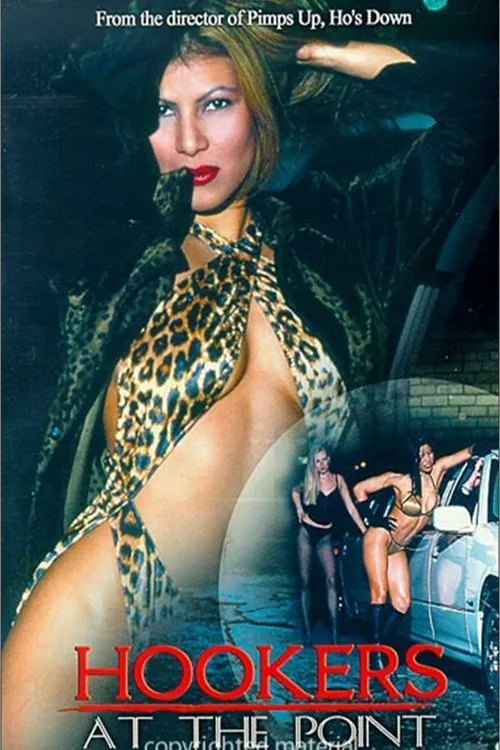Hookers at the Point

Enredo
Hookers at the Point is a documentary film series directed by Brent Owens, focusing on the lives and experiences of sex workers in the South Bronx, particularly in the Hunts Point area. The documentary is a groundbreaking and unflinching portrayal of the sex trade, shedding light on the harsh realities and challenges faced by individuals involved in this profession. The first installment, Hookers at the Point, delves into the daily lives of sex workers, showcasing their struggles, triumphs, and vulnerabilities. The documentary crew embeds itself in the community, gaining the trust of its subjects, and as a result, offers an intimately candid look at this often-misunderstood world. The film is raw, honest, and at times, heart-wrenching, as it captures the emotional depth and resilience of these women. Throughout the documentary, the audience is introduced to a cast of complex and multifaceted individuals, each with their own story and motivations. We meet Maria, a tough and charismatic sex worker who has been in the business for over a decade, and her younger protégée, Ana, who is new to the profession and struggling to navigate its harsh realities. There's also Rachel, a sex worker who has managed to balance her "life" with a steady relationship and a job, but still battles with feelings of guilt and shame. The documentary also explores the broader social and economic context in which sex work thrives. The South Bronx, where the film is set, is a neighborhood plagued by poverty, violence, and lack of opportunities. Many of the sex workers featured in the documentary are single mothers, struggling to make ends meet, and feel that sex work is their best option for supporting themselves and their families. One of the most striking aspects of Hookers at the Point is its portrayal of the women's relationships with their clients. Unlike typical media depictions of sex work, which often focus on the commodification of the body, this documentary showcases the complex emotional dynamics at play. The women featured in the film are not simply objects for sale; they are individuals with agency, who navigate their relationships with clients, negotiating power and intimacy. The film also explores the risks and dangers associated with sex work, including violence, exploitation, and arrest. Many of the women featured in the documentary have experienced trauma, and some have even lost friends or colleagues to violent incidents. Despite these threats, the women in the documentary remain defiant, refusing to be defined solely by their profession. The second installment, Hookers at the Point: Going Out Again, follows up on some of the individuals from the first film, offering a glimpse into their lives a year or more after the initial documentary was shot. This sequel is particularly remarkable, as it captures the women's ongoing struggles and triumphs, their shifting relationships, and their evolving perspectives. Ana, the young sex worker who was introduced in the first film, is now more confident and self-assured, having navigated the challenges of her early days in the profession. Rachel, the sex worker who was balancing her "life" with a steady relationship and a job, has begun to explore other career options, driven by a growing desire for a more sustainable and fulfilling life. At the same time, the documentary also highlights the ongoing challenges faced by the women, including the difficulties of maintaining relationships, managing finances, and dealing with the emotional toll of their work. The women's stories serve as a stark reminder that sex work is not a monolith, but rather a diverse and multifaceted experience, influenced by individual circumstances and choices. Ultimately, Hookers at the Point and Hookers at the Point: Going Out Again offer a nuanced and empathetic portrayal of sex work, one that humanizes the individuals involved and challenges the stereotypes and stigmas surrounding this profession. By amplifying the voices and experiences of sex workers, the documentary series provides a platform for the women to share their stories, their struggles, and their resilience, and to reclaim their agency and autonomy in the face of adversity.
Resenhas
Recomendações



